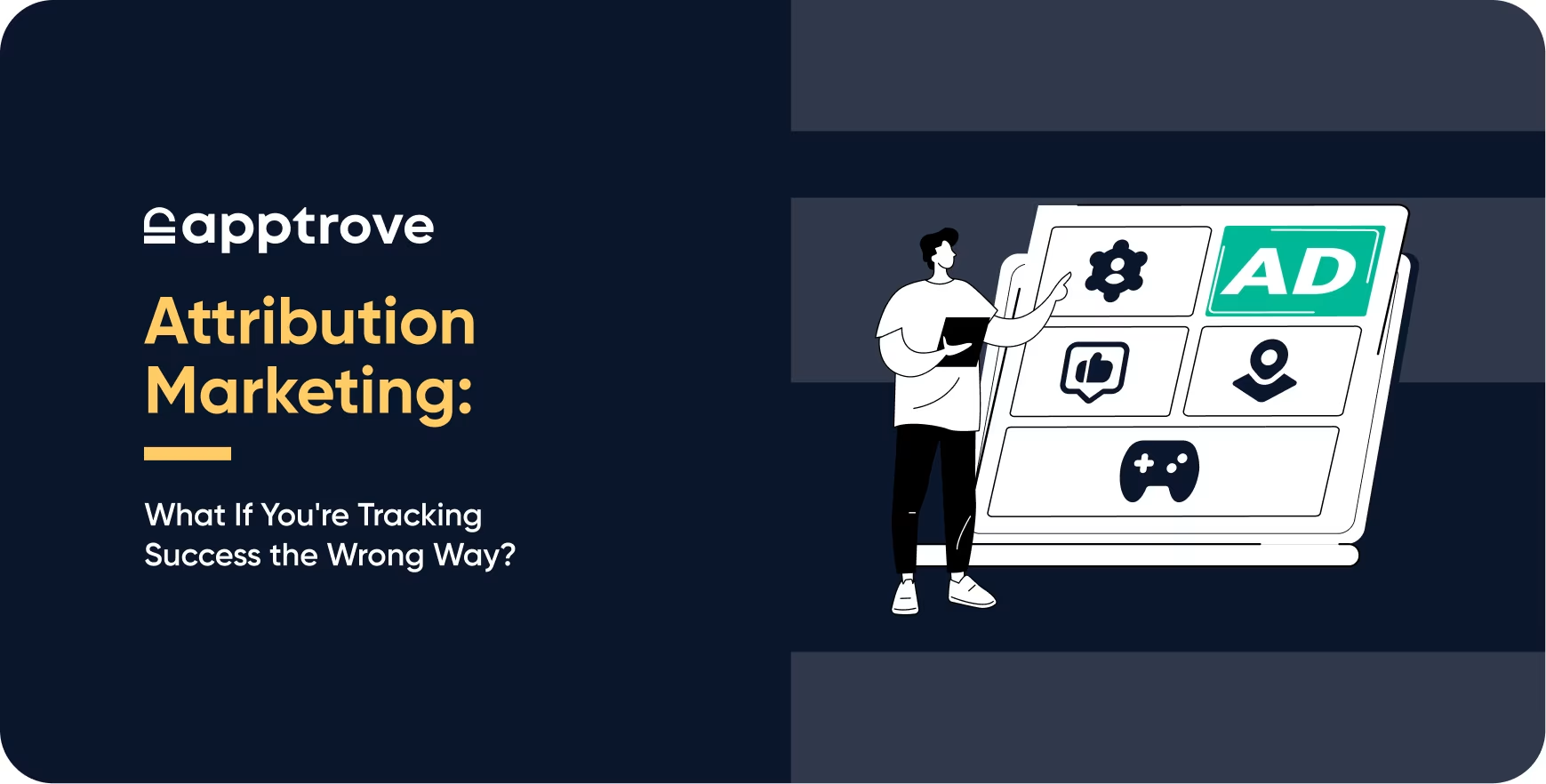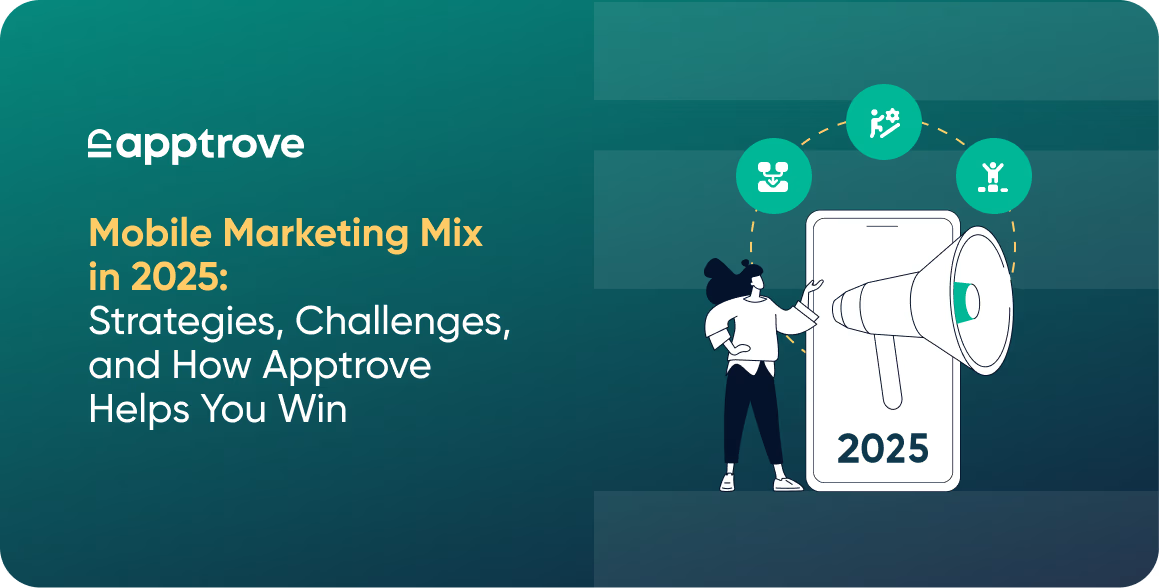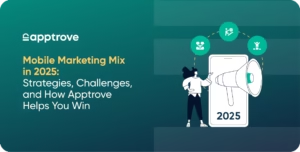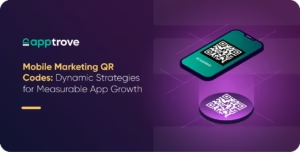Imagine spending thousands of dollars on influencers, ads, and campaigns in app stores, and then realizing you don’t even know which of those things are actually working. Painful, right? That’s the problem that attribution marketing solves.
At its core, attribution marketing reveals the truth behind every install, click and in-app purchase. Attribution is about giving credit where due, wasting as little as possible as a marketer, and being sure that money is only spent where profit is coming from.
If you’re an app owner, app developer, or performance marketer, understanding attribution marketing is your mantra for profitable growth. If you want to grow your app the right way, Apptrove can be your partner. Let’s break it down!
What Exactly is Attribution Marketing?
Have you ever looked at campaign numbers and thought, “Okay, but where are my best customers coming from?” Attribution marketing is your answer to this most frustrating question when it comes to growth.
Attribution marketing is the process of tracking and analyzing every touchpoint a customer interacts with before making an action within your app. It is what marketers use to track which campaigns, ads, or channels actually encouraged a customer to take an action, whether that’s download your app, making a purchase, or subscribing to your service. In simple words, attribution will tell you which part of marketing gets the credit for the results.
Today, the mobile marketing landscape is more fragmented than it has ever been. A single customer could see a TikTok ad, then clicked a pre-roll ad on Youtube, checked out your listing in the app store, and finally converted on an Instagram ad. Attribution connects every step that the user takes from the first touch all the way to the final conversion.
You can think of it as detective work for your entire marketing funnel. Instead of guessing which channel or campaign deserves the credit for your success, attribution marketing lets you credit it accurately. And the reward? Better decisions, less budget black holes, and the ability to double down on what is really working.
But What is the Need of Attribution Marketing?
If you are responsible for an app or digital product in 2025, you can probably tell the landscape is not as simple as it once was. Ad costs are rising, consumer privacy regulations are becoming stricter, and Meta Ads, Google Ads, TikTok, influencer shoutouts, and native placements are all competing for pieces of your marketing budget.
With global consumer spend on apps and games projected to hit $2.2 trillion between 2021 and 2030, which is a 267% surge compared to the previous decade, mobile apps can no longer leave their growth up to fate. However, the twist here is that without attribution marketing, you are operating blindly in a world that expects accuracy.
Attribution marketing can be thought of as the map to your marketing gold mine. Following the privacy-first frameworks like SKAdNetwork (SKAN) on iOS, Google Privacy Sandbox on Android, and GDPR & CCPA in non-US markets, there remains a lot of blind-spot data marketers can no longer understand. These have taken away the granularity of data you could previously access, making it harder to get detail on users.
In this context of continuous fragmentation, attribution marketing allows you to connect the dots across channels, understand the longer-term customer value of various efforts, and invest wisely in campaigns that look like they are working. An attribution marketing strategy is the only way to ensure that your marketing roadmap is not anchored in blind guesswork, and that’s a risk hardly any business can afford to take.

Types of Attribution Marketing Models: How You Assign Credit Changes Everything
Attribution models help you determine which part of the journey deserves the credit for that win. Depending on the model you choose, the same campaign could look like a hero or a total waste of budget.
Selecting the appropriate attribution model is not only a technical implementation. It is also about ensuring you are reading your attribution marketing success in the correct way.
Let’s break down the types of attribution models marketers are using, and when they make sense.
Single-Touch Attribution:
This attribution model gives full credit to a single marketing interaction. They’re simple to understand and implement, and thus, many attribution tools, especially the ones navigating privacy-first environments, default to these models.
1. First-Touch Attribution
Full credit is given for the first ad or interaction a user has with your app. This model assumes that initial discovery is the most important part of the journey.
For example: A user saw your mobile game in a TikTok ad, then saw instagram stories, but ultimately installed from a YouTube pre roll ad. In first-touch attribution, all credit would be given to TikTok, no matter what influence the later ads had on the decision.
2. Last-Touch Attribution
100% credit is allocated to the final click or interaction before the app install or conversion. This model assumes that this final touchpoint is the last step that “sealed the deal”.
For example: A user sees a Twitch streamer playing your game, and then they scroll past some Instagram ads. Finally, they click on a Google UAC ad to install the game. Last-Touch would credit the Google UAC ad, it being the last interaction before final action. This is the model mostly used, especially in mobile attribution, including Apptrove.
3. Lead Conversion Touch Attribution
Typically used for campaigns designed with the purpose of capturing leads rather than direct purchases or installs. The touchpoint the user submits their info, for example, an email sign-up, gets all of the credit.
Multi-Touch Attribution:
Multi-touch models can attribute based on the entire customer journey, crediting to multiple touchpoints. That sounds great theoretically, but in a post-ATT and Privacy Sandbox world, it is extremely rare to have visibility to every touchpoint.
1. Linear Attribution
Credit is given equally to every touchpoint along the user’s journey from the inital discovery to final conversion. It is assumed that all the touchpoints give an equal amount of push to the user to reach the conversion stage.
For example: A user saw your app in a Reddit thread, a TikTok ad, and an App Store featured list before installing. In the case of linear attribution, each one would get one-third of the total credit.
2. Time-Decay Attribution
Credit is given based on how close the touchpoints are to the conversion.
For example: If a user saw a banner ad one month ago, and then a Facebook ad a few days prior to converting, more credit would be attributed to the Facebook ad.
3. U-Shaped Attribution
Credits are attributed in a way that 40% of the conversion credits to the first interaction, 40% to the last interaction, and then the remaining 20% is split across the other interactions along the way. This allows credit to be given to both the discovery phase and the conversion phase.
4. W-Shaped Attribution
A third major moment is added to the journey in this model, which is the opportunity creation point. This is especially applicable in the B2B world. It provides valuable credit to first touch, lead creation, and final conversion.
5. Full-Path Attribution
This attribution model credits every meaningful interaction along the way based on its true impact. Perfect in theory, but the most difficult to do practically, especially considering the privacy-first ecosystem.
6. Custom Attribution Models
Some brands create hybrid models that prioritize touch-points based on their internal hierarchy, such as favouring one type of campaign over the other.
How to Choose the Right MMP For Your Attribution Marketing
Choosing an attribution provider is more than simply selecting a tool, it’s selecting your eyes and ears in the marketing ecosystem. The right Mobile Measurement Partner (MMP) will help you build user journeys and separate guesswork from your growth.
Selecting an MMP can be daunting, particularly with privacy changes, evolving platforms, and a tight budget. Here is a clear checklist to help you select your perfect attribution partner.
Platform Compatibility: Can Your MMP Track Everywhere You Advertise?
First of all, you will want to ensure that your attribution partner covers all potential channels. From Meta Ads and Google App Campaigns to TikTok, CTV channel, influencer partnerships, and anything more that you plan for your advertising strategy, your MMP should track and be able to show you where you are driving from. If your MMP misses one of these, you can create blind spots in your performance reports , and in the app marketing world, blind spots are a synonym for budget loss.
Attribution Marketing Models & Reporting: Is Their Logic Future-Proof?
Different attribution providers follow different models. Some give partial credit to multiple sources (multi-touch), others focus on the first impression, and some,like Apptrove, prioritize the last meaningful action before conversion.
In the age of privacy, this choice really does matter. Last-touch attribution, for example, gives you a straightforward view of what was the last driver to influence an install or purchase.
Beyond the model, also assess how your MMP presents your data. Whether or not your insights are real-time, the reporting is flexible enough to fit your requirements, such as alignment with business case goals, and if it can help you match campaign costs to actual actions taken by users during the campaign.
Apptrove presents to you a clean, intuitive dashboard designed to help you understand what has happened and why, in a way that will help you take informed actions on your data, not just admire it for what it is.
Scalability: Will Your MMP Keep Up as You Grow?
As you scale your app, through regional expansions, seasonal campaigns, or new viral growth, the amount and complexity of your marketing data will increase rapidly. Your attribution marketing partner should be properly equipped for this growth without missing a beat.
By scalability, the meaning is that your MMP must be able to reduce the impact of heavy traffic on attribution accuracy, adapt to the effects of new campaign types and channels, and maintain performance as you grow into new markets or campaign across channels simultaneously.
Apptrove’s infrastructure has been designed with scale in mind. As you run A/B tests with new ad creatives or get ready for another global launch, Apptrove will ensure that your last-touch attribution remains accurate and compliant regardless of how complex your marketing stack gets.
Support & Reliability: Will They Be There When Things Break?
Attribution is not a ‘set it and forget it’ job. When campaigns fail to track, when privacy updates hit, or when there is missing postback data, you need actual human support and not just a ticket to an endless queue.
A good MMP does more than just respond to your support tickets. They will provide proactive-monitoring and be able to identify issues before you even notice if you are not vigilant, know the risks associated with real-time marketing and work to ensure your downtime is minimal. Your perfect mobile measurement partner should have the mindset to be a partner and not just a vendor, especially during the most stressful campaigns.
Apptrove’s customer success team is available 24/7 to assist app marketers with their normal setups as well as any unexpected delays. Whether it’s the launch of the first campaign or when the clock is ticking to resolve a technical issue minutes before it goes live, you’ll never have to worry about not having experienced help on your side.
The Future of Attribution Marketing is Now
The evolution of privacy regulation and the rise of new technology means the future of attribution marketing is all about being adaptive. Marketers are already transitioning towards first-party data and more contextual data to navigate this privacy-conscious landscape.
Artificial intelligence is unlocking new smarter ways to measure and optimize campaigns – even when working with fewer data points. It’s no longer simply about tracking last-click, but understanding the entire user journey in a more intelligent, data-driven way.
And let’s not forget innovative out-of-home solutions have arrived. This disruption that comes alongside first-party data now allows brands to more easily track their actions in the real world.
Navigating this new landscape, having the right MMP is more important than it’s ever been. Apptrove allows your brand to stay on top of your attribution marketing game, using trusted, secure, and diverse data to future-proof your strategies; and ensure that your marketing investment is compliant and effective.
To know impact of attribution marketing in more depth, check out our article on mobile attribution and understand the bigger picture!
FAQs
Q1. What is the purpose of attribution marketing?
Attribution in digital marketing helps you understand which marketing channels, campaigns, or touchpoints actually influence your customers’ decisions. Its purpose is to give clear visibility into where your conversions are coming from, so you know which strategies are driving real results and which ones are just draining your budget.
With accurate attribution, marketers can confidently allocate resources, optimize campaigns, and scale what works. In short: attribution turns guesswork into growth strategy.
Q2. Why is last-touch attribution a popular model for mobile apps?
Last-touch attribution is straightforward and reliable. It gives full credit to the final interaction before a user installs or converts, making it easier for marketers to tie results directly to specific campaigns.
Q3. How can Apptrove help with attribution marketing?
Apptrove helps you see the real story behind every install, click, and in-app action. Our platform tracks where your users are coming from, which campaigns are driving results, and how each marketing effort contributes to your app’s growth, all in one clear, easy-to-read dashboard.
Whether you’re scaling globally or running targeted campaigns, Apptrove ensures your attribution stays accurate, privacy-compliant, and ready to support your next big move.






